Isfahan Traditional Bazaars | A Shopping & Cultural Adventure
Isfahan, Iran's third-largest city, possesses a rich history and cultural heritage, attracting a significant number of tourists each year.
While renowned for its historical monuments, Isfahan's bazaars also contribute significantly to the city's allure. These traditional marketplaces serve as vibrant social and commercial centers, frequented by both locals and visitors.
The bazaars offer a diverse selection of goods at various price points, ensuring a satisfying shopping experience for all. However, their significance extends beyond commerce. The architectural styles and historical narratives embedded within these structures offer a unique lens through which to view Isfahan's past. Exploring the Isfahan Bazaars provides not only shopping opportunities, but also a deeper appreciation for the city's culture and history.
List of Isfahan Traditional Bazaars
- Isfahan Grand Bazaar (Bazaar-e Bozorg-e Isfahan)
- Isfahan Bazaar Honar (Art Market)
- Hakim Bazaar
- Isfahan Flowers and Plants Bazaar
- Isfahan Fish Bazaar (Persian Gulf Fish Market)
1. Isfahan Grand Bazaar (Bazaar-e Bozorg-e Isfahan)
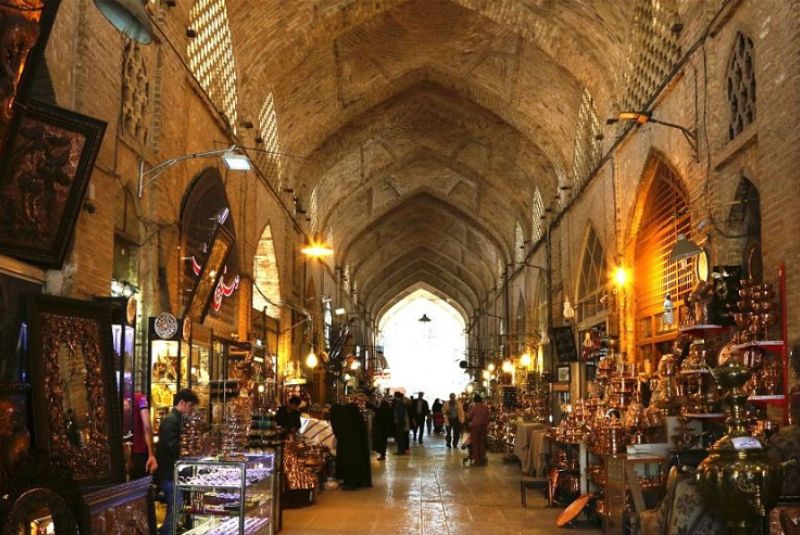
The Isfahan Grand Bazaar, also known as the Qeysarieh Bazaar or Soltani Bazaar, is one of the most renowned and extensive historical shopping centers in Isfahan, Iran. Renowned for its traditional architecture, it serves as a major tourist attraction for the city. The bazaar's covered structure provides a pleasant atmosphere year-round, offering respite from both the summer heat and winter chill.
Visitors to the Grand Bazaar can find a wide variety of goods, including copperware, clothing, handicrafts, and fabrics. The bazaar's location places it amidst numerous historical monuments, including the Grand Mosque and the Nizam al-Mulk Dome, allowing visitors to combine shopping with cultural exploration.
The Grand Bazaar's structure is complex, encompassing various sections such as the Qeysarie Bazaar, the Zargaran Bazaar (Esfahan Gold Bazaar), the Samavar Bazaar, the Coppersmith Bazaar, the Golshan Bazaar, the Tanavval Bazaar, the Ahangaran Bazaar (ironmongers' bazaar), the Shahi Bazaar (royal bazaar), timchehs, caravanserais, mosques, sarais (open-air courtyards), hammams (bathhouses), and schools. Specific sections within the bazaar cater to particular wares, such goldsmiths (Zargarha), blacksmiths (Ahangarha), gunsmiths (Tofang-saz ha), shoemakers (Kafsh-douz ha), hatmakers (Kolah-douz ha), and confectioners (Qannad ha).
The Grand Bazaar holds the distinction of being Isfahan's most famous historical Bazaar. This extensive complex stretches from Naqsh-e Jahan Square to Atiq Square (also known as Kohneh Square). Its architectural and structural design is truly unique.
For those seeking unique souvenirs, the bazaar boasts a dazzling array of handicrafts, including inlay work, enameling, pen making, tapestry weaving, turquoise embroidery, gold and velvet weaving, pottery, tile making, paintings, and carpets.
| Interested in visiting Isfahan? Check out our Isfahan tours to find the one that suits you best!
Qeysarie Bazaar
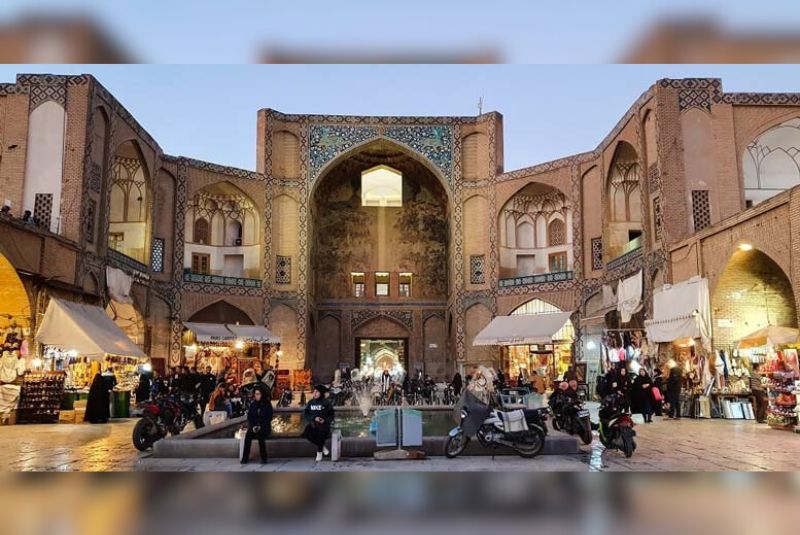
The Qeysarie Bazaar, well-known as Isfahan carpets and handicrafts Bazaar, is a prominent section of the Isfahan Grand Bazaar. Constructed between 1011 and 1029 by order of Shah Abbas Safavi, the Qeysarie Bazaar reflects a blend of architectural styles from the Seljuk and Safavid periods.
Located at the northern edge of Naqsh-e Jahan Square, the Qeysarie Bazaar boasts an impressive entrance adorned with intricate tilework in shades of brick, vermilion, and gold. The bazaar itself comprises two floors. The ground floor houses shops and stalls, while the upper floor historically functioned as administrative and commercial offices for the Bazaar.
The Qeysarie Bazaar is renowned for its labyrinthine layout, offering a captivating exploration for visitors. Within its numerous corridors, one can discover a trove of Isfahan's handicrafts, antiques, exquisite fabrics, and carpets.
A thorough exploration of the Qeysarie Bazaar can take approximately four hours. Several access points exist, but the most well-known entrance, known as Sardar-e Qeysarie (Qeysariyeh entrance), is conveniently located north of Naqsh-e Jahan Square. Including the Qeysarie Bazaar in your Isfahan itinerary is highly recommended.
Golshan Bazaar (Bazaar Jarchi or Sarai Golshan)
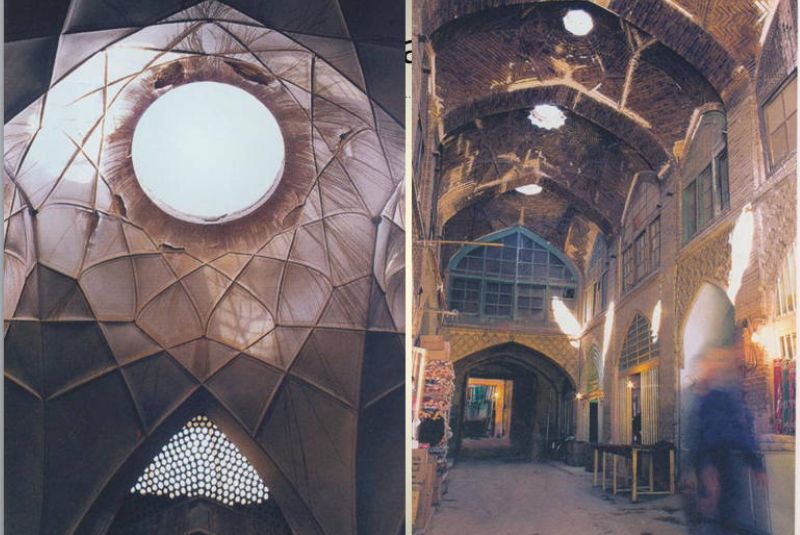
Dating back to the Safavid era, this section is known for its beauty and historical significance. It attracts many visitors, including those not intending to make purchases. Located near the southwest side of the Isfahan Jame Mosque, the bazaar contains notable structures like the Big House, Timcheh Nakhchian, and the Jarchi Mosque.
| Read more: Traditional Persian Architecture
Isfahan Coppersmith Bazaar (Mesgarha Bazaar)
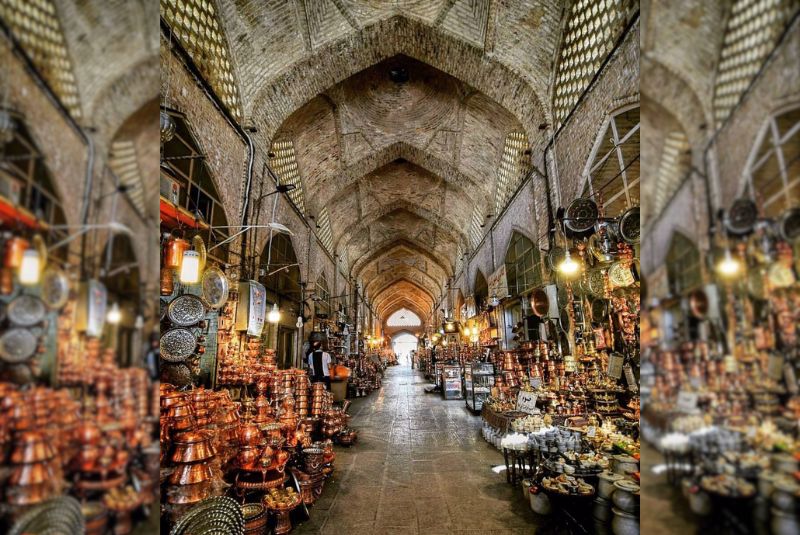
The Isfahan Coppersmith Bazaar, also known as Mesgarha Bazaar, is a section within the Isfahan Grand Bazaar situated on the west side of Naqsh-e Jahan Square, north of Ali Qapu Palace. Established during the Safavid era, it was renowned for the rhythmic sounds of hammering that accompanied the creation of copperware.
Traditionally, the bazaar bustled with activity as coppersmiths shaped the metal into a variety of vessels. While the hammering may be less frequent today, with many shops selling pre-made copperware, the Bazaar retains its historical charm.
The architectural style of Mesgarha Bazaar features a distinctive series of high arches, sometimes referred to as "springs."
Despite some changes, the Coppersmith Bazaar remains a treasure trove for souvenir hunters seeking a piece of Isfahan's heritage. Visitors can find a diverse selection of copper goods, including:
- Large and small pots
- Large and small Samavars
- Copper bracelets and rings
- Decorative plaques with copper designs
- Flowers, vases, and jars
- Mugs
- Decorative war implements (replicas of swords and armor)
Other Sections within Isfahan Grand Bazaar
- Gunsmiths' Bazaar: This section is located within Naqsh-e Jahan Square Bazaar and merged with the Isfahan Samavar Bazaar "Saraei Mokhles." In ancient times, the gunsmiths section was known as the bazaar of sword makers. If you go to Naqsh-e Jahan Bazaar, be sure to visit this section.
- Darwazeh Ashraf Bazaar: Dating back to the Safavid era, this bazaar stretches from Ashraf Gate to Chahar Suq-e Shah (a four-way crossing). Historical landmarks like the Great Jeddah School (built in 1058 AH) and Mullah Abdullah School are located within this section.
- Shoemaker's Bazaar: As the name suggests, this Bazaar specializes in footwear. It extends from Sheikh Lotfollah Mosque to Imam Mosque, encompassing the south and west sides of Naqsh-e Jahan Square and Ali Qapu Palace.
- Chahar Suq Painting Bazaar: Formerly a large bazaar, remnants of the Chahar Suq Painting Bazaar can still be found south of Shah Abbas Street. Historically, this Bazaar housed educational institutions like the Maryam Begum and Chahar Suq Nakhshi Schools.
- Najafabadi Bazaar: This bazaar was once part of the old Arab Bazaar. Within its confines lie the Vardistani Sarai. An interesting feature is a small bathhouse attributed to the works of Sheikh Baha'i, a prominent scholar. A branching alley leads to the twin minarets of Bokht Agha Al Muzaffar Dom.
- Confectionery Bazaar: This section's history has undergone a transformation. During the Safavid era, it catered to pen and lantern makers. However, by the Qajar era, it had transitioned into a haven for sweet treats, becoming the confectionery Bazaar known today.
| Discover: Isfahan Mosques You Should Visit
2. Isfahan Bazaar Honar (Art Market)

The Isfahan Bazaar Honar, also known as the Isfahan Gold and Silver Market, boasts a rich history intertwined with artistic expression. This section of the Isfahan complex originated as part of a three-endowment collection constructed during the Safavid period.
Built in 1083 AH (1672-1673 CE), it was initially known as the "Madar Shah Caravanserai." Over time, the name transitioned to the more evocative "Bazaar Honar," signifying its artistic focus.
Interestingly, the bazaar once held the distinction of being Isfahan's tallest, earning the nickname "Boland Bazaar" (Tall Market). This moniker stemmed from its impressive eight-meter roof.
In the year 1340 of the Iranian calendar (1961-1962 CE), the endowment organization entrusted the building to Isfahan's artistic community. This marked a new chapter for the bazaar, transforming it into a platform for showcasing a dazzling array of handicrafts.
Today, the Isfahan Bazaar Honar remains a vibrant center for art and commerce, attracting visitors seeking treasures crafted by skilled artisans. Its historical significance adds another layer of intrigue to this captivating marketplace.
3. Hakim Bazaar
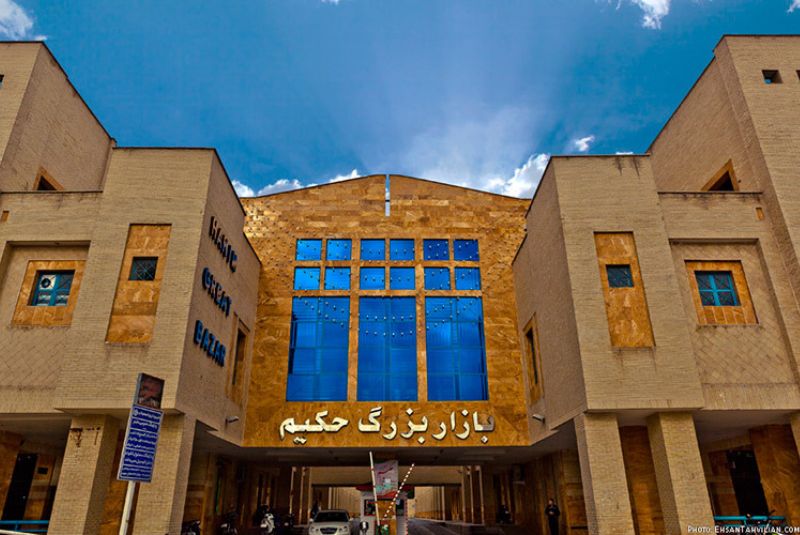
This sprawling market, located near Naqsh-e Jahan Square, is one of the Isfahan's largest carpet markets showcasing a dedicated section known for its extensive collection of hand-woven rugs.
Encompassing over 40,000 square meters and housing around 200 stores, this carpet market caters to all tastes and budgets. Whether you're a seasoned collector or simply admire the artistry, a visit here is a captivating experience. The vibrant colors, intricate designs, and undeniable craftsmanship of these carpets make them a true testament to Isfahan's rich heritage.
So, even if you're not planning to purchase a rug, take some time to wander through this section and marvel at the breathtaking displays of Persian artistry.
| Suggestion: Best Hotels in Isfahan to Stay
4. Isfahan Flowers and Plants Bazaar
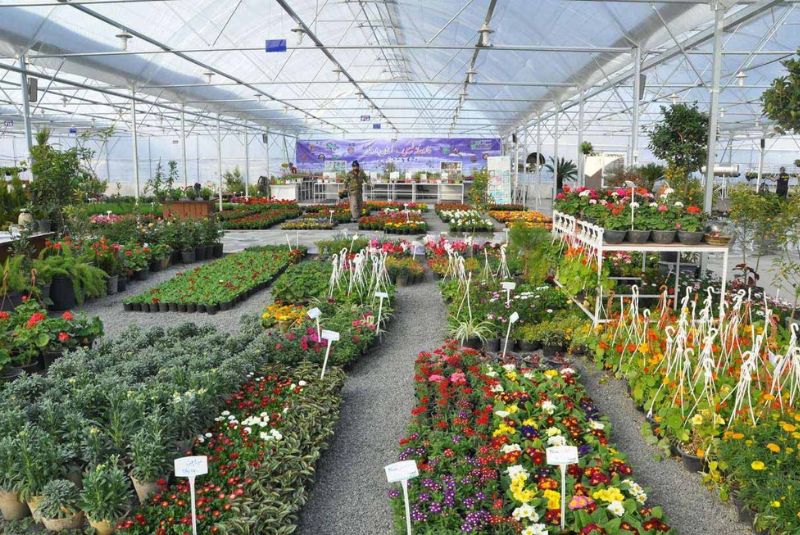
The Isfahan Flowers and Plants Bazaar, also known as the Hamedanian Flower Bazaar, is a popular destination for horticulture enthusiasts visiting Isfahan, Iran. It offers a vibrant and diverse selection of flowers, plants, and gardening supplies.
The market experiences its peak season in March and April, coinciding with the spring bloom. However, it maintains a year-round selection of floral and plant life.
The bazaar is comprised of five distinct complexes, each catering to specific gardening needs. These sections include:
- Cut Flowers
- Bamboo and Decorative Leaves
- Fancy and Doll Decorative Plants
- Flower and Vase Tools
- Orchids, Seasonal Plants, Trees and Seedlings
- Cactus and Houseplants
- Flower Arrangement and Terrarium
- Fertilizer, Pesticides, Seeds, and Soil
- Dried and Artificial Flowers
The Isfahan Flowers and Plants Bazaar serves as a significant resource for both casual plant enthusiasts and serious horticulturalists in Isfahan. Its diverse offerings and convenient layout make it a popular destination for locals and tourists alike.
| Suggestion: Best Restaurants in Isfahan
5. Isfahan Fish Bazaar (Persian Gulf Fish Market)
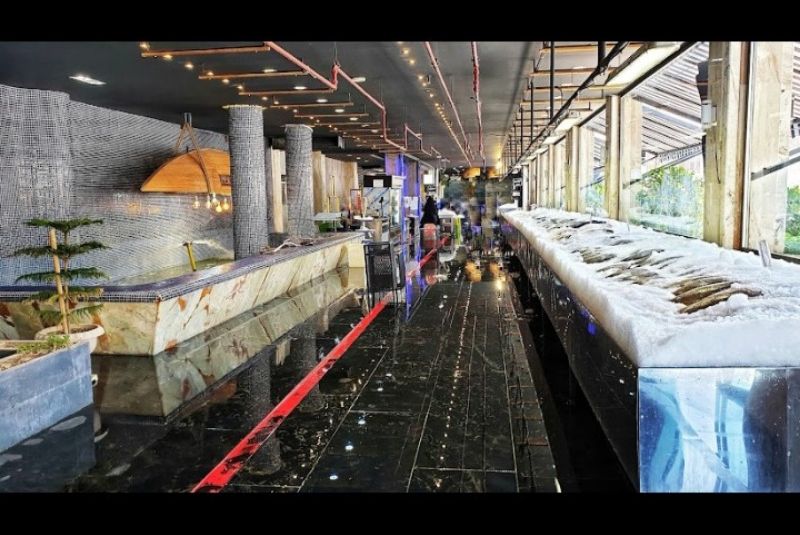
Isfahan caters to seafood lovers with the Persian Gulf Fish Market, a bustling marketplace located on Soffeh Street. This market boasts an impressive variety of fresh and high-quality aquatic products, including freshwater fish, shrimp, varieties native to both the north and south of Iran, imported options, and even selections from fish farms. Whether you're a local resident seeking ingredients for a delicious seafood dish or a visitor looking for a unique culinary experience, the Persian Gulf Fish Market offers something for everyone. With its diverse offerings and commitment to freshness, this market has become a vital part of Isfahan's culinary scene.
| Discover: Siosepol Bridge - 33 Archs on Zayandeh Rud
Final Takeaway
To fully experience the captivating blend of shopping and historical immersion offered by Isfahan's bazaars, consider planning your visit during the spring or early autumn seasons. These seasons offer more favorable weather conditions, potentially making your exploration of the extensive bazaar complex more enjoyable.
Additionally, the selection of goods available in the bazaars may be more extensive during these times, allowing you to discover a wider range of unique souvenirs and local goods.
Share your story!
Comment below and let us know about your Experience.
Your story inspires others!


Comment
Leave a Comment